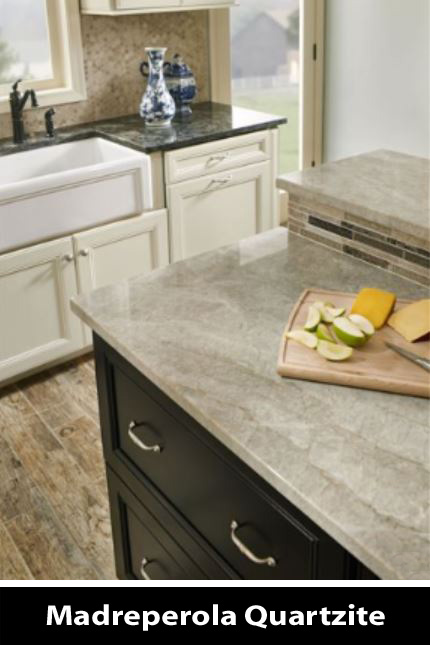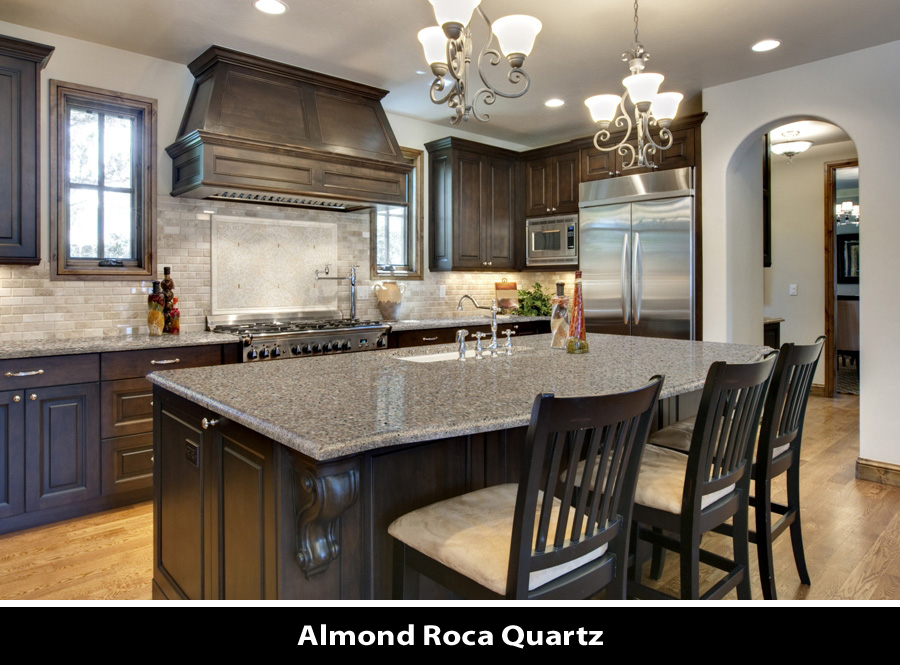Quartz Vs. Quartzite - Are They The Same?
May 19, 2014Quartz and quartzite, sound the same and are often terms that are incorrectly used interchangeably, but when it comes to how they are formed and how they perform, these two materials are as similar as granite is to plastic. Interestingly, both are excellent countertop materials for their own reasons, depending upon the desires of the homeowner.
Origins
Quartzite is a natural stone material; whereas quartz is a manmade material. Quartzite is a very hard metamorphic rock that originated as sandstone - it was transformed into an extremely strong and durable natural stone when the empty spaces between the sandstone were filled with the mineral quartz and they were then fused together under heat and pressure. (When heated, individual quartz pieces recrystallize giving it a beautiful and decorative sparkling pattern.) Quartz, on the other hand, is a marriage of nature and technology. Rather than a sandstone/quartz combination, quartz, which is a very hard natural mineral to begin with, is combined with resins, polymers, and sometimes pigments or even pieces of glass, to result in a sturdy, sparkling surface material. When it comes to origins, quartz and quartzite share a basic foundation of the mineral quartz - and that is where the similarity ends!
Durability
Quartz and quartzite both rival the beauty of granite, marble and other natural stone materials, but they are also durable as well. Though one is manmade and one is entirely natural, quartz and quartzite are comparable to each other in hardness. However, quartzite must be sealed for protection against wine, acidic foods, coffee or other common foods that can also etch or stain other natural stone countertops made from granite, travertine, marble, etc.. Quartz does not have to be sealed, as the process of manufacturing it fills in pores between the quartz crystals from the start.
Beauty
When it comes to appearance, quartz and quartzite have a few differences. Quartzite, as a natural material, will have more variation. It was created by Mother Nature; as such, it will have a unique spread of color and sparkle throughout. Quartz, as a manmade material, will be more uniform. When compared side by side, quartzite will have a more natural look compared to quartz.

Quartzite is notably found in very light colors, even those that resemble marble, which make them especially attractive to those who prefer elegant white countertops in a natural stone. Granite, for example, is not found in light whites. Marble is generally higher maintenance. Quartz specifically has its own unique advantage in that it can be manufactured in abundance in the most popular colors and patterns, including whites - and can even be created to look like other natural stones such as granite and marble. The gorgeous look of these natural stones with the durability of a manmade product is a strong selling point for quartz.
Aside from personal preference of the overall appearance, quartzite is slightly more likely to show seams when installed. (This is true of all natural stones.) However, the production of quartz is controlled, and therefore, pieces can be manufactured to match up in pattern when installed. Both quartz and quartzite are beautiful surface materials with a sparkle that sets them apart from other natural stones, and they are both striking when given a high polish shine.
As you can see, quartz and quartzite are not the same, though they have something in common - namely, the mineral quartz as a raw material source. Each offers something unique - natural beauty or manufactured consistency. Each is truly appealing in its own way!
LEARN MORE ABOUT QUARTZITE COUNTERTOPS
Quartzite Countertops - The New Wonder Of The World?
Beautiful And Trending Quartzite Countertops
Are Quartzite And Quartz Countertops The Same Thing?
Stylish Living: Decorating With Quartzite Countertops
Quartzite Countertops Vs. Granite Countertops

